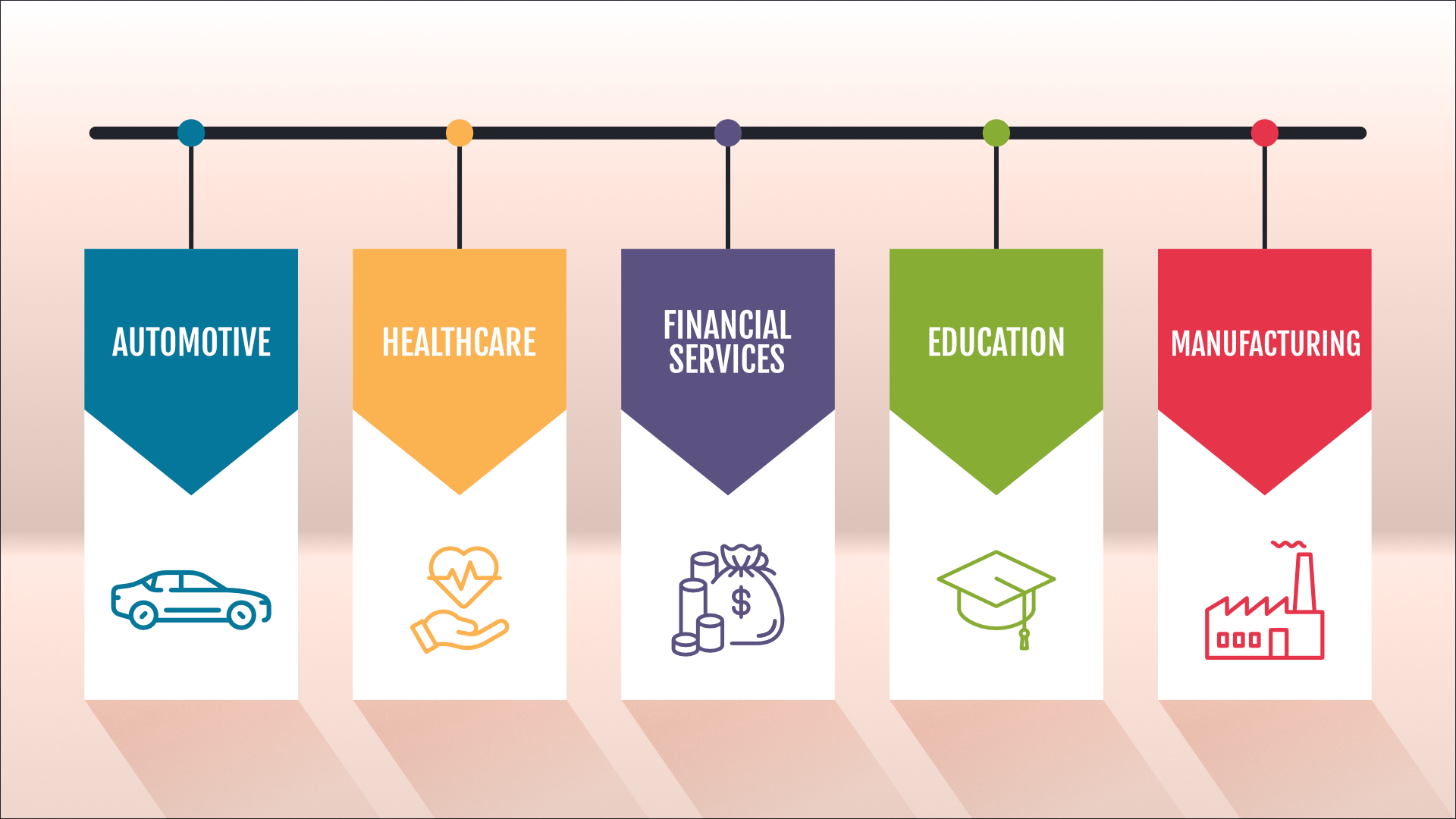Article's Content
What Is a Vertical?
A vertical, also known as a sales vertical or vertical market, is the industry that a company’s offerings are specifically catered towards. Examples of verticals include automotive, education, manufacturing, and real estate.

The Difference Between Vertical and Horizontal Markets
There are two types of markets: horizontal and vertical.
Horizontal markets feature products and services that are useful in many different contexts across industries. Think stationery or cell phones — every sector may use these products for unique reasons or a certain purpose, but they still use them.
Vertical markets have more depth to them. Solutions intended for a sales vertical generally only have one purpose in a specific context, and the only competition they face is from other manufacturers offering very similar products.
Consider something like an electrocardiogram machine.
While outliers can exist, they’re a product that is intended specifically for hospitals and ambulances, so their vertical market is the healthcare industry.
If you don’t work in healthcare and found that your boss had purchased one for the office, you’d be surprised and likely a little concerned.
Vertical vs. Horizontal Software
The same division exists within software. Software solutions can aim for vertical or horizontal models, and that can dramatically affect their future success.
A vertical software solution aims to be the most robust option for a more narrow range of uses. That can mean it’s everything a certain industry or a person with a specific job title needs.
For example, the Bloomberg Terminal is an incredibly successful system built exclusively for financial institutions. It’s an irreplaceable tool that allows bankers to analyze markets, trade stocks, and monitor news, among other things. Because it was designed specifically for the financial sector, the Bloomberg Terminal covers a lot of ground within its industry.
Horizontal software solutions aim to be more broadly used in different industries. They may not offer as much depth as vertical solutions, but they’re meant to be more accessible and easier to use for a wider range of users.
Microsoft Office is one of the most successful horizontal software solutions ever made. It encompasses a wide variety of tools — word processing, data analysis, presentation slide creation, etc. — that are relevant in many different industries and job roles.
Why Choose Vertical Sales?
Based on the above, it may sound like employing a vertical sales strategy leaves a lot of money on the table. The more appealing your product or service is to everyone, the more successful it will be, right?
The problem with that notion is that when you try to make something apply to everyone in every possible scenario, you’re really marketing it to no one. It’s very easy to think up scenarios where your company’s product or service could be used by many people, but are those use cases realistic?
What generally ends up happening is that your understanding of the specific needs and wants customers use your solution to address will be too shallow to effectively serve any of them.
Choosing a specific vertical allows your company to really entrench itself in that field, understand the pain points of those who are looking for a solution, market according to those pain points, and create value for the customer. While every industry will have its own unique considerations, it’s a lot easier to juggle one egg than it is to juggle seven.
There’s no denying that employing a vertical sales model is a lot of work, especially if you haven’t had much experience with a specific industry. However, the more you learn about the customer and their company, the better positioned you will be not just to sell but establish long-term and meaningful relationships.
Vertical Tips & Tricks
Since verticals are heavily concentrated, they provide opportunities to work with companies that may otherwise be competitors.
For instance, though Apple and Samsung may compete in cellular phone sales, the former actually contracts the latter for the glass used to make iPhone screens.
Businesses all have the goal of creating value and helping to make the customers’ lives easier, so look for chances to work with the competition. You’re all going through the same journey together.
There are no hard-and-fast rules in business, and that’s especially true when it comes to sales. The best processes feature a mix of vertical and horizontal principles. Think carefully about how you can create the most value for your audience, and don’t be afraid to mix and match elements from both methodologies.






